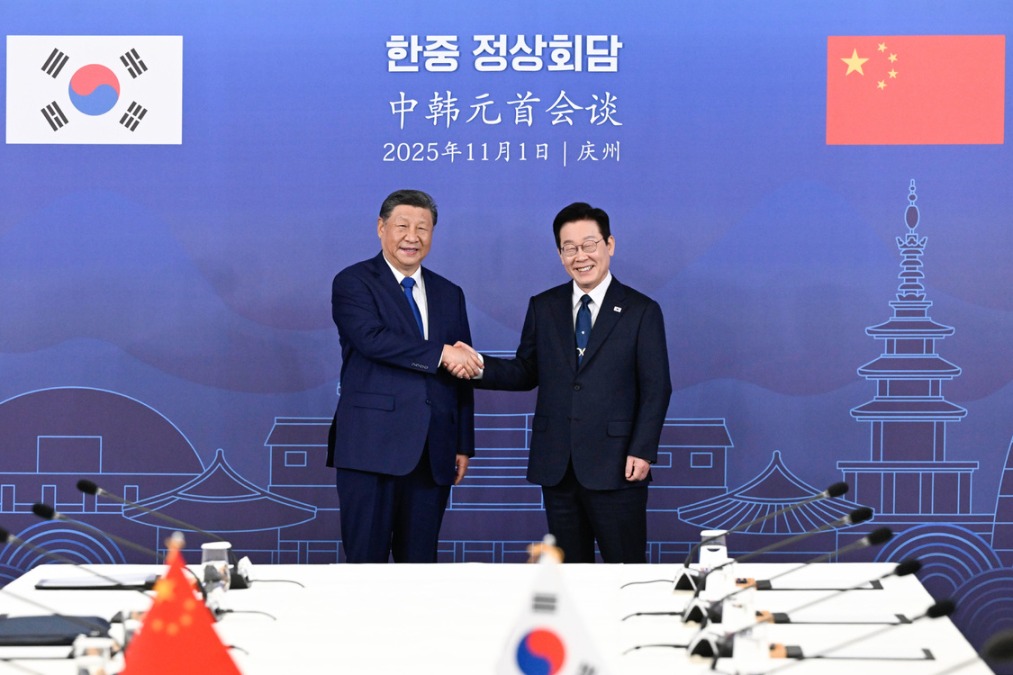Joint institutions and programs: Alternative choice of International education in post-pandemic era
By Wang Yan | China Daily | Updated: 2020-08-03 07:48

The novel coronavirus pandemic has disrupted many students' pursuit of study abroad. Willingly or unwillingly, a huge majority of them have returned to their home countries and are completing the rest of their semesters or courses online. And as the numbers of infections and deaths are still rising in most countries and given the pandemic-induced risks and uncertainties, many parents have changed their plans to send their children abroad for studies.
As a matter of fact, even before the pandemic, the higher education sector was facing a plethora of challenges such as rapidly escalating costs, lower completion rate and a widening disconnect with future workforce needs.
The COVID-19 pandemic has exacerbated the predicament due to reduced budgets or revenues of higher education institutions, which now face the complex challenge of digitalizing courses and training teachers for the new modalities of "remote education".
As the world adapts to the new normal, it is becoming increasingly evident that the pandemic will have a long-term effect on higher education.
How can students pursue international education at a time of a serious global public health crisis like COVID-19? And how can higher education institutions engage in effective international education cooperation in the post-pandemic era?
Notably, students from China form the largest group of international students enrolled for tertiary education in the world. China is also the largest destination country for internationally mobile students in Asia.
Many people in China and around the world still believe that studying abroad is a ticket to high-quality higher education, becoming globally competent, and improving employability in increasingly globalized labor markets.
On the other hand, international education cooperation is considered an instrumental approach to capacity building for higher education institutions, as well as a country's education system. Just like the demand for the best minds to join the global fight against the pandemic, the demand for global talents is higher than ever. International education remains a pursuit of higher education institutions as well as students.
Even before the pandemic broke out, the Chinese government had announced that it was committed to further opening up its education sector. According to the "Guideline on Expanding and Deepening Education Opening Up", issued by the Ministry of Education and seven other departments recently, China will continue to cultivate more talents to propel its modernization drive by encouraging students to study abroad and expand cooperation with other countries, and create more opportunities for overseas studies.
In particular, China will develop an enabling and favorable environment for joint programs/institutions based on three policies. First, the "Regulations on Sino-Foreign Joint Institutions and Joint Programs" will be amended to serve as a regulatory/institutional framework to ensure the quality of joint institutions/programs. Second, administrative formalities and procedures will be streamlined, such as filing in lieu of approval and joint approval by the ministry and provincial governments. And third, the government will ease restrictions on sponsors of joint institutions/programs, as well as education modalities, create incentives and take special access administration measures.
In China, there are three broad types of education cooperation mechanisms in Sino-foreign programs (Sino-foreign cooperation in running schools)-joint institutions established as independent legal entities, institutions without legal status within or attached to an existing Chinese institution, and joint education programs.
There are more than 2,300 joint institutions and programs accredited by the Ministry of Education, about 1,200 postgraduate degrees, and 92 joint institutions (nine as independent legal entities).
As higher education institutions worldwide are facing mounting financial pressure, joint institutions/programs will be a cost-effective approach to attract and retain international students. Without heavy investment in infrastructure, it offers international education in a more flexible and agile way, and allows students to access quality education-similar to that offered by higher education institutions abroad but without the related risks and the cost of overseas travel.
From another standpoint, online is becoming "increasingly mainstream" because of the COVID-19 pandemic after decades of slow and steady adoption by the higher education sector. Online education also facilitates the development of joint education programs in which Chinese and foreign education providers can establish a partnership to offer joint education programs with a tech-based approach.
The shift to online classes has also created opportunities for the development of articulation programs, and such joint educational programs don't involve any systematic introduction of foreign courses and educational resources. Typical articulation programs are based on "2+2" or"3+1" models, that is, a student spends two years in China and then the next two years in the partner institution abroad, or three years in China and one year in the partner institution abroad.
With the availability of online delivery, students can complete their studies, attain the credits and obtain a dual degree accredited by both domestic and foreign higher education institutions through a hybrid online and offline joint program.
Another trend of higher education is a transition of higher education from a degree-based talent pipeline to a skills-based talent pipeline. In particular, COVID-19 has created a sudden demand for mid-career reskilling and upskilling at an unprecedented scale. Joint programs and institutions could also play a key role in providing such programs as micro-credentials that provide skill and competency training demanded by employers.
Tomorrow belongs to those who brave the challenges and embrace the opportunities today. With further opening-up and reform of the education sector, we could expect booming joint programs and institutions as well as a flurry of innovations to adapt to students' needs and improve their offerings in the post-pandemic era.
The views don't necessarily reflect those of China Daily. The author is an associate research fellow at the National Institute of Education Sciences.
























